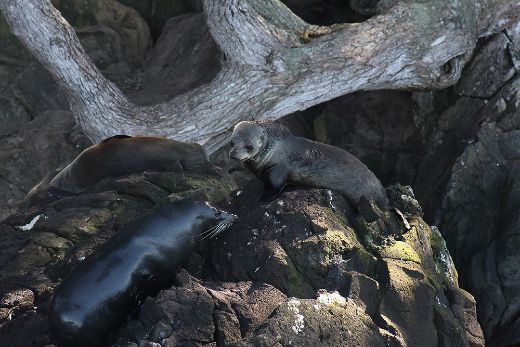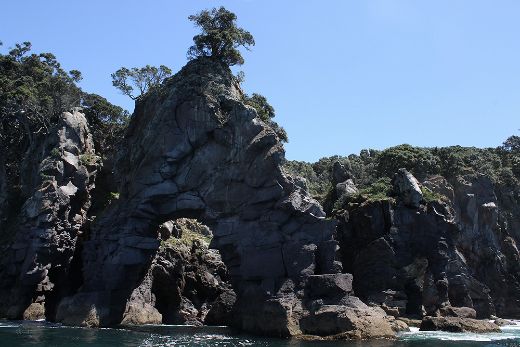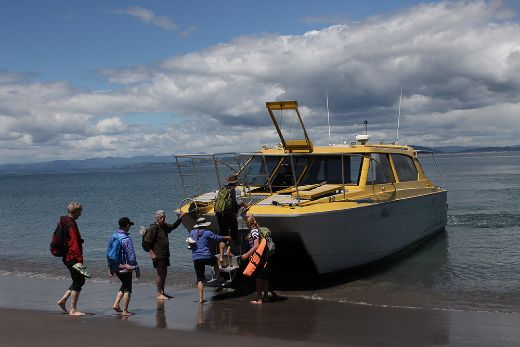Once almost devoid of vegetation and native wildlife, Moutohora Island, just offshore from Whakatane – a stunning example of successful pest eradication and re-planting – is well worth a visit.
Due to the precious nature of this pest-free island, access is highly restricted to the public so the best way to visit is with a Department of Conservation approved concessionaire, of which White Island Tours is one.
On a beautiful October morning I joined a small party aboard ‘The Moutohora Cat’ skippered by David Plews with guide Fiona Coulter for the trip across the Whakatane bar and out to sea to the island. Moutohora Cat is the ideal vessel in which to visit Moutohora (Whale Island) because, depending on the conditions, she can be maneuvered close inshore, as on our first stop to view seals resting on rocks on the island’s western side. A few minutes later Dave nosed Moutohora Cat onto the beach at Boulder Bay, and we alighted by way of a ladder over the bow. As Fiona took our small party on a guided walk, she explained that the island’s original native vegetation and wildlife had been largely destroyed by human activity and feral animals including goats, rabbits, rats and cats. The island, a remnant volcanic cone which has eroded away to leave its two distinct peaks, has a number of significant archaeological sites, including an extensive pa. In the 1830s a shore-based whaling station was established but the venture failed without a single whale being captured. Forty years later sulphur was extracted from the island’s still active geothermal area but was of such poor quality, the venture was abandoned in 1895. The next phase of industrial activity came in 1915, when quarrying provided rock for the construction of the Whakatane harbour wall. A total of 26,000 tonnes of rock was removed over five years. In 1965 Moutohora was declared a wildlife refuge and the island was bought by the Crown in 1984. The most significant feature of Moutohora’s current fauna is the breeding colony of grey-faced petrels. Sooty shearwaters, little blue penguins, the threatened New Zealand dotterel and variable oystercatcher also breed on the island. Threatened species which are occasional visitors are the Caspian tern, the North Island kaka and New Zealand falcon. Almost as soon as we entered the re-generating bush we saw kakariki (red crowned parakeets), tui and fantail. Shortly after I heard, then caught my first ever glimpse of a tieke – North Island saddleback. That these vocal and attractive birds are on the island is a result of local Ngati Awa and the Department of Conservation joining forces in March 1999 to transfer 40 tieke from Repanga (Cuvier Island), off the coast of Coromandel, to Moutohora. Bellbirds and grey warblers also call the island home. The island also has a population of little brown kiwi which we didn’t see. We know they are there because Fiona located some of the males with an antenna, which picked up the signal from their transmitters. Fiona also lifted the lid of a gecko “motel” to reveal a number of the lizards in the specially made shelter. “There are tuatara on the island too and sometimes we see them resting by the track,” she said – but not that day. We stopped to take in the spectacular views from the saddle on the island’s ocean side before walking to Sulphur Bay, where hot pools that once existed were used by early pioneers as therapy for invalids. After lunch on the beach and the chance of a swim, it was back to Boulder Bay where Dave brought the cat to shore for us to board, and then made a circumnavigation of the island so we could to view its rugged ocean face. Moutohora/Whale Island tours operate daily but trips are subject to weather and demand. To find out more, visit: www.whiteisland.co.nz





0 Comments
Leave a Comment